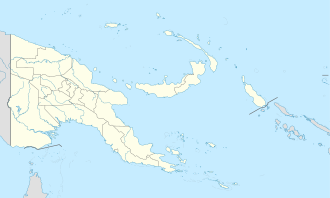 | |
 Tolokiwa Island is to the west of New Britain | |
| Geography | |
|---|---|
| Location | Bismarck Sea |
| Coordinates | 5°19′S147°36′E / 5.317°S 147.600°E |
| Archipelago | Bismark Archipelago |
| Administration | |
| Province | Morobe Province |
| LLG | Siassi Rural LLG |
Tolokiwa Island, also known as Lottin Island, is an island in the Bismarck Sea, situated between Long Island and Umboi. The island is volcanic in origin and part of the Bismarck Archipelago. It is in the Lokep Ward of the Siassi Rural LLG local government area of the Morobe Province of Papua New Guinea (PNG). [1] Although the island has suffered no recent volcanic eruptions, it is in an area that suffers from frequent earthquakes. [2]

